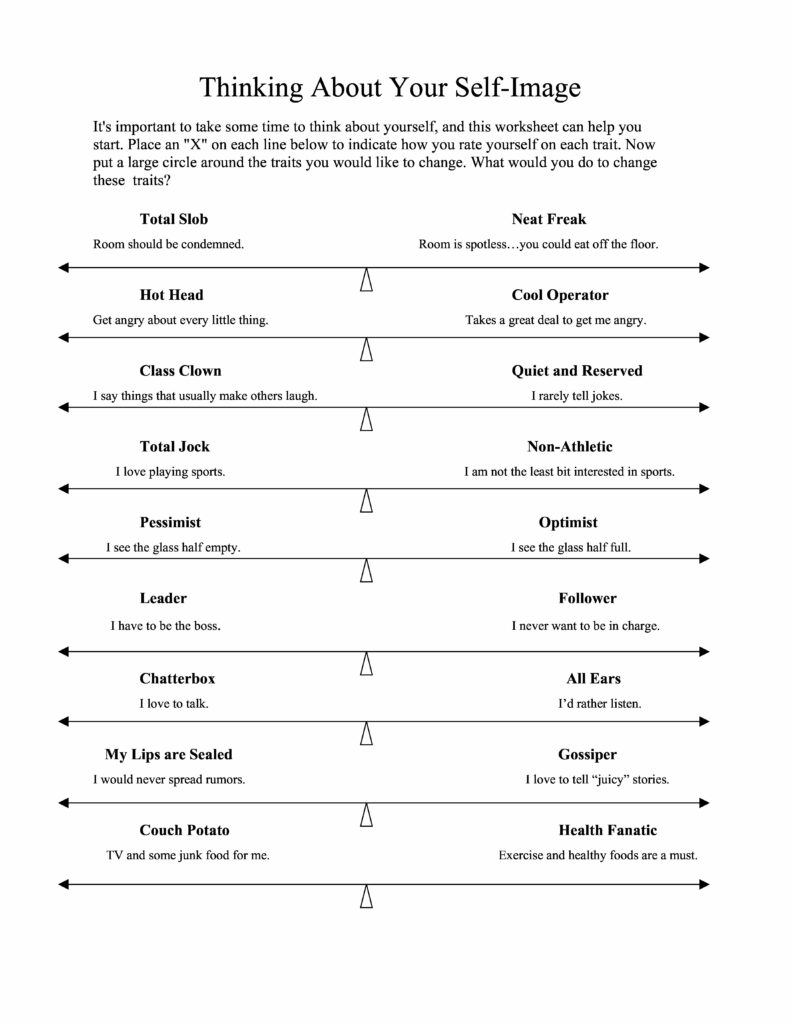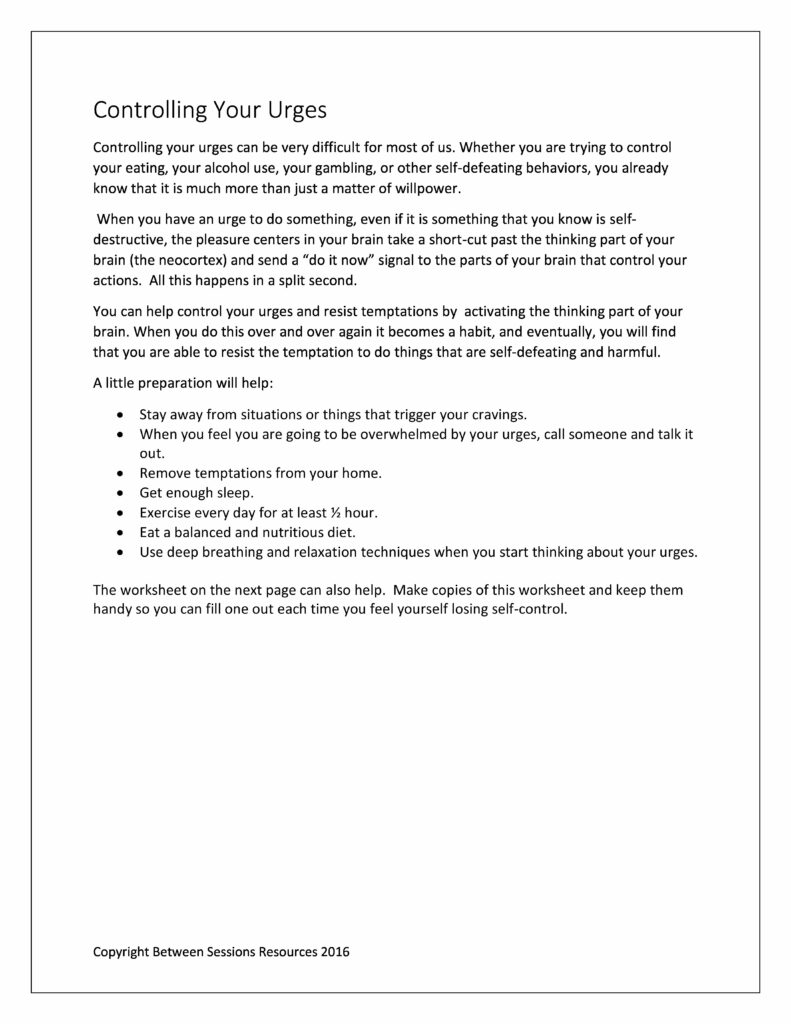Teens have a special way of communicating and learning about themselves, so we’ve made sure that all our therapeutic activities for teens are appealing and engaging to this age group.
To modify the tools, click the ‘Send to Client’ button by each tool to open the Psychology Forms Filler. You can then edit the tool as you see fit and either print it out or send it to a client to be filled out online. Click here for a tutorial on using the Psychology Forms Filler.
We’ve tried to address every teen issue we can think of, and more tools are added every week!
If you are looking for something you can’t find on this site, please let us know by clicking here and our team of writers, graphic artists, and therapists will custom-design it for you.
This worksheet is designed to help teens start thinking about their character traits and behaviors and which ones they would like to change. (values, self-image)
This worksheet is designed to help people tolerate distressing thoughts. It asks people to visualize several “disgusting” images and be aware of them without judgment. Then it asks people to visualize a situation that typically causes them anxiety and rate how well they are at being mindful over a period of seven days. (mindfulness, panic attacks, anxiety, 0916)
This worksheet is designed to help individuals examine their irrational catastrophic thinking and their subsequent avoidant behavior. (panic attacks, anxiety, CBT, 0916)
This worksheet is designed to help people control their urges by activating the thinking part of their brains and make decisions that will interrupt the cycle of self-defeating behaviors. (addiction, self-control, impulse control, 0816)
This worksheet is designed to help people identify and prioritize the situations or places that they currently avoid because they cause anxiety. (panic attacks, agoraphobia, CBT)
This form is designed to help people keep track of what happened after each panic attack, including triggers, severity of symptoms, behavior, and things that helped control the attack. (panic attack, anxiety, panic disorder, agoraphobia).
Created by the Anxiety and Depression Association of America, this brochure differentiates normal anxiety from panic disorder, and gives basic information on treatment and finding help.
This worksheet is designed to help people develop insight into their problem behaviors, including the positive as well as the negative consequences. The worksheet is intended to help people step back from just judging themselves negatively and to see how their problem behaviors play a functional role in their daily lives. This worksheet can be used in writing a CBT oriented treatment plan. (CBT, DBT)
Learning to accept reality is an important part of living in the present. Distorting reality can lead to depression, anxiety, disappointment in your relationships and more. This worksheet has three parts to help people understand how they distort memories from their past, events in the present, and thoughts about their future. (DBT, CBT, Thought-Changing, 0916)
This tool was prepared by the Australian Center for Clinical Interventions and is intended to help people learn to challenge their faulty assumptions about their bodies. It will be helpful for many people who dwell on the imperfections of their body, but particularly those with Body Dysmorphic Disorder. (OCD, anxiety disorders, eating disorders, self-injury, 0716).










